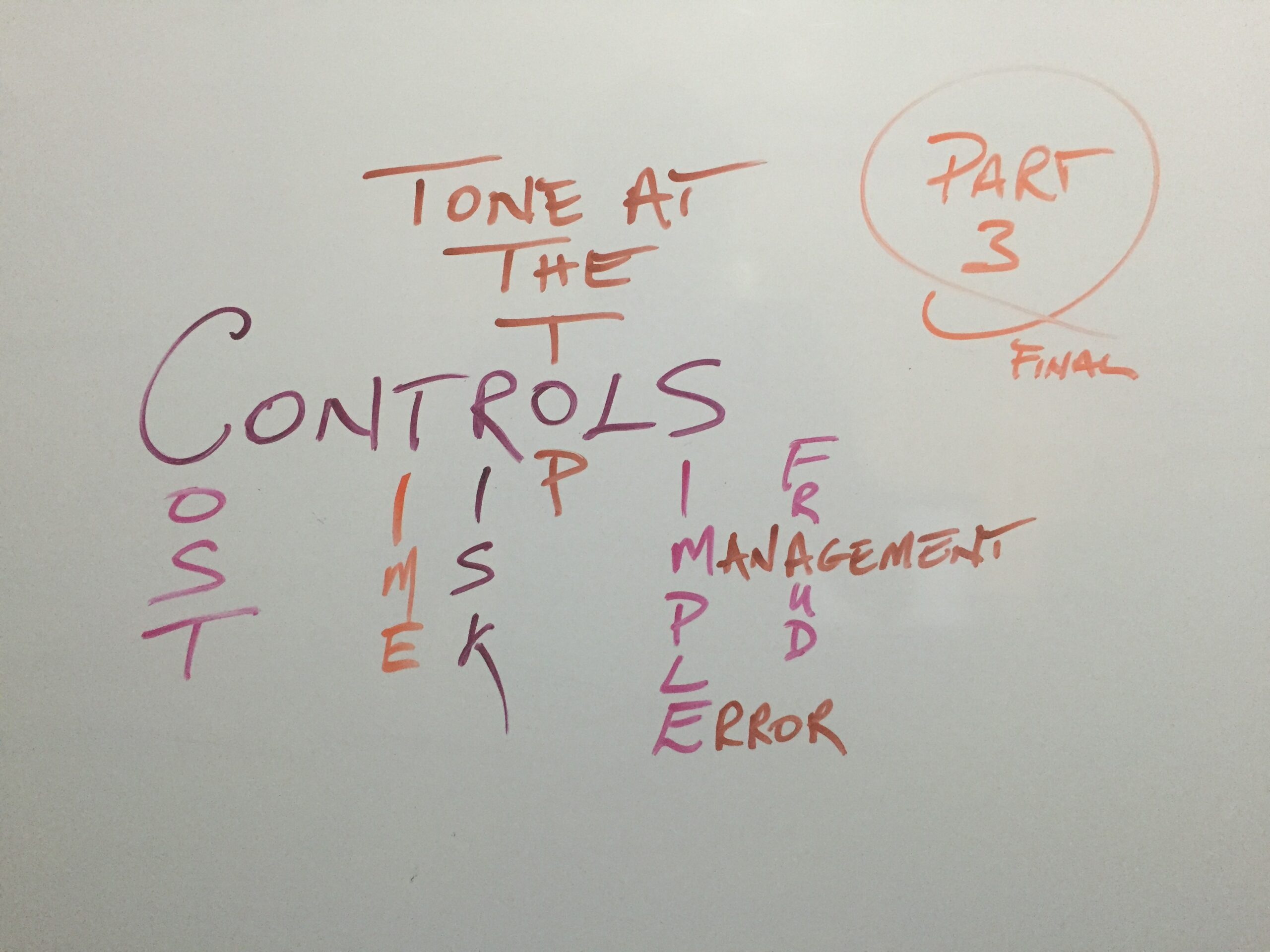In our previous article, as a preamble to the topic of internal controls, we provided an introduction to the Risk Assessment Process and Fraud Risk.
Fraud risk is universally faced by all business (large and small) and also not-for profit organizations and government entities. Any organization with assets is in danger of those resources being targeted by dishonest individuals. And, unfortunately, a notable portion of that threat comes from the very people who have been hired to carry out the organization’s operations.
Fraud schemes general fall into 3 categories
- Asset misappropriation
- Financial statement fraud
- Corruption
The asset misappropriation category may include
- Theft of cash receipts (skimming, write-off schemes)
- Fraudulent disbursements (Fictitious vendors/invoices/billing schemes, ghost employees, time and attendance fraud, mischaracterized expenses, cheque tampering, manipulating commission calculations, false voids/refunds at cash register)
- Larcency of petty cash and inventory through falsified supporting documentation and vouchers
Financial statement fraud occurs through the use of journal entries, related party transactions or other unusual transactions designed to override the true financial results and position of the company, to achieve one or more objectives, such as:
- Secure a bonus payment, by overstating revenues and understating expenses
- Avoid a tax liability by padding expenses or skimming revenues
- Qualify for bank financing or meet regulatory requirements by manipulating the entity’s financial position and results to show better profitability, liquidity, debt and capital ratios
- Maintaining multiple versions of financial statements for different stakeholders
- Overvalue an asset or business by using manipulating inputs into valuation models to secure the highest price during a sale
Corruption includes conflict of interest and bribery. Popular examples of bribery include bid rigging and invoice kick-backs.
The following are some of the observations noted by the Association of Certified Fraud Examiners (ACFE) in their 2016 Global Fraud Study:
- Organizations of different sizes tend to have different fraud risks. Corruption was more prevalent in larger organizations, while check tampering, skimming, payroll, and cash larceny schemes were twice as common in small organizations as in larger organizations.
- Asset misappropriation was by far the most common form of occupational fraud
- The net losses to the business were much higher in those frauds at the owner/executive level. The correlation between authority and loss most likely occurs because high-level fraudsters tend to have greater access to their organizations’ assets than lower-level employees, as well as a better ability to evade or override anti-fraud controls.
- The most common detection method in the study was via a Tip off (which emphasizes the importance of having whistleblower/reporting hotlines)
- Small organizations had a significantly lower implementation rate of anti-fraud controls than large organizations.
- The most prominent organizational weakness that contributed to the frauds in our study was a lack of internal controls
- Fraud perpetrators tended to display behavioral warning signs when they were engaged in their crimes. The most common red flags were living beyond means, financial difficulties, unusually close association with a vendor or customer, excessive control issues, a general “wheeler-dealer” attitude involving unscrupulous behavior, and recent divorce or family problems.
In part 3 of our article, we will examine closely some of the anti-fraud controls available and the challenges in implementing these in a small business environment.
Dinesh Bhola (FCCA, CA, CIA) is the Managing Director at DSB Financial Solutions Ltd, a company providing accounting, auditing, taxation and business advisory services. The above is for general informational purposes only and is not meant to serve as a substitute for formal advice. We urge you to consult with your service provider or us if you require further advice or recommendations.


